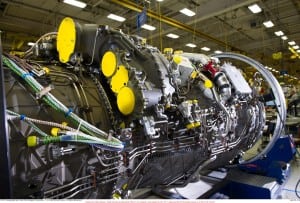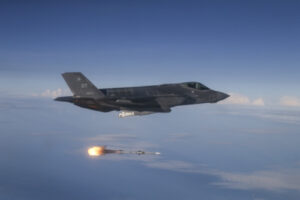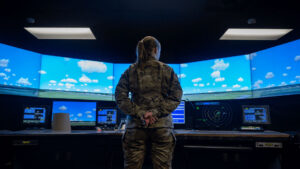Defense Daily
-
 Army
ArmyArmy Details Potential Plan To Buy Over 4,000 C-UAS Systems, May Export To Taiwan
The Army is seeking industry’s input on a new effort to potentially purchase over 4,000 systems capable of defeating small drones, with an interest in solutions that could be exportable […]
-
 Air Force
Air ForceAETC Plans to Receive First T-7A in December for Training Integration
The U.S. Air Force’s Air Education and Training Command (AETC) expects to receive its first T-7A Red Hawk this December. In 2018, Boeing [BA] and Saab won an up to […]
-
 Business/Financial
Business/FinancialMachinists Approve New Contract With Pratt & Whitney, Head Back To Work
Machinists at Pratt & Whitney on Connecticut approved a four-year contract, ending a three-week strike that began on May 5 after union members rejected the company’s final offer for wage […]
Tagged in: -
 Uncategorized
UncategorizedNNSA ‘On Track’ With W88, to Reach Production Milestone ‘Relatively Soon’
The National Nuclear Security Administration (NNSA) is “on track” with its W88 warhead, the agency’s acting principal deputy administrator said in a Senate panel last week. “We’re on track with […]
Tagged in: -
 Business/Financial
Business/FinancialSerco Completes Acquisition Of Northrop Grumman Business Unit
Serco Inc. on Tuesday said it has completed its $327 million acquisition of Northrop Grumman’s [NOC] mission training and satellite ground network communications software business, further expanding the United Kingdom-based […]
Tagged in: -
Tuesday, May 27, 2025
- Defense Watch: Palantir Partnership, U.S./UAE, 95th Wing, Leidos/Saudi MoU
- MDA Reveals $151 Billion Decade-Long SHIELD Missile Defense Contract Vehicle For Next-Gen Capabilities
- Scout Space Wins Space Force Funding for GEO Space Domain Awareness
- Space Systems Command Forecasts Big Award of Maneuverable GEO Commercial Contract
- DIU Seeks AI/ML Tools To Help Navy Converge Data At Maritime Ops Centers
-
Tuesday, May 27, 2025
- Defense Watch: Palantir Partnership, U.S./UAE, 95th Wing, Leidos/Saudi MoU
- MDA Reveals $151 Billion Decade-Long SHIELD Missile Defense Contract Vehicle For Next-Gen Capabilities
- Scout Space Wins Space Force Funding for GEO Space Domain Awareness
- DIU Seeks AI/ML Tools To Help Navy Converge Data At Maritime Ops Centers
- Space Systems Command Forecasts Big Award of Maneuverable GEO Commercial Contract
-
 Space
SpaceScout Space Wins Space Force Funding for GEO Space Domain Awareness
Scout Space has won a new contract from the U.S. Space Force to deliver a new GEO Geostationary Orbit (GEO) space awareness domain (SDA) sensor. The contract, worth $3.8 million, is a Tactical […]
Tagged in: -
 Missile Defense
Missile DefenseMDA Reveals $151 Billion Decade-Long SHIELD Missile Defense Contract Vehicle For Next-Gen Capabilities
The Missile Defense Agency on May 21 published a presolicitation notice previewing a new decade-long next-generation missile defense contract vehicle worth up to $151 billion total. MDA expects to issue […]
Tagged in: -
 Uncategorized
UncategorizedDefense Watch: Palantir Partnership, U.S./UAE, 95th Wing, Leidos/Saudi MoU
Palantir/Divergent. In a new partnership announced on May 20, Palantir will provide access to Divergent Technologies’ advanced manufacturing system on its Foundry and Warp Speed software platforms. “The partnership provides […]
